Course Description
The Archipelago Studio is an ongoing design research project at the Daniels Faculty. It contains a body of Master of Architecture Thesis projects, essays and visual essays, drawings and models. Each iteration of the studio is experimental and different from the previous one, using the Archipelago as a projective model against limit conditions of the contemporary city. All explore ways of making Architecture against Crisis.
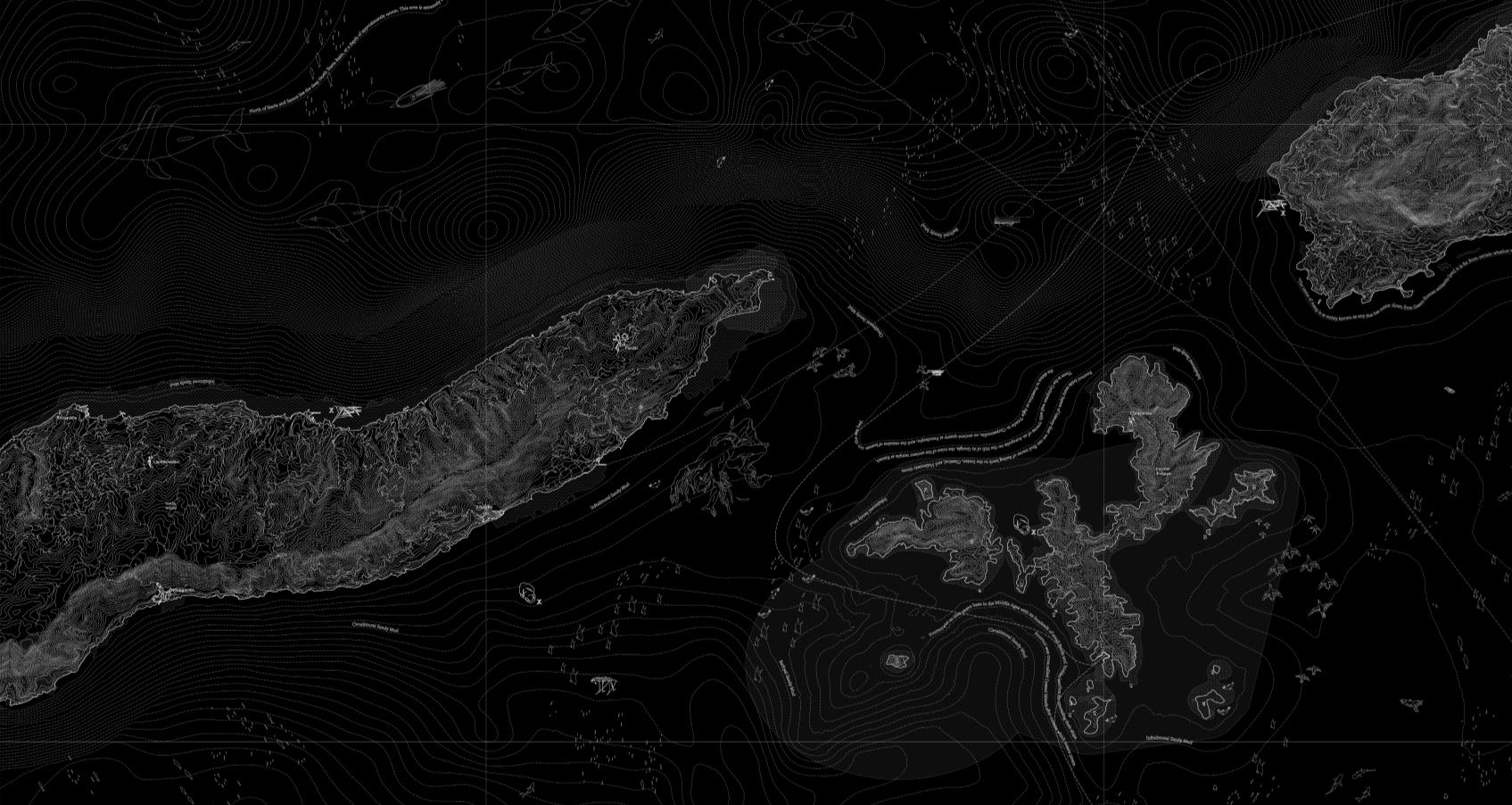
Site / Crisis
The Archipelago Studio is based on the following assumptions:1. We must redefine our notion of Site, not as a plot but as a network – a mesh of actors, vectors, fields and objects. Site is no longer a framework for control, mastery, tabula rasa, but for allyship, relationality, working with what we have. The urban, social, ecological crises of our time are inconceivable, slow and invisible, popping across the globe, across cities, in catastrophic ruptures. The Archipelago method is an entry to this. It allows us to visualize site as a complex network of relations, and project within the field and objects and unpredictable events through storytelling, modelling, and drawing.
2. Describing a Crisis is not enough. We need to find ways to act against it. To do so, we can describe an Agent: an organization, or synergy of institutions driving social, urban, environmental change. This agent becomes a close friend to our project, helping us reinvent its architecture. This way we also redefine our notion of Program, not as function, service, optimization, but as footprint, motivation, and impact for our architecture. We mediate between larger infrastructures and resources and local groups.
Change
3. An architecture against, or despite, different Crises cannot save the world, but it can drive change: social justice, integration; conservation, renewal; shelter, sanctuary; public space. A thesis can be aligned with these goals. Via research-through-making – storytelling, agent-building (activism), and re-building – it becomes a design project.4. Our architecture and activism can also engender spaces of freedom and joy. These will be memorable structures, clement icons, or pilot projects creating new identity against the Crisis
Based on these assumptions the Archipelago Studio provides an open template for students’ independent research and design. Students identify different Crises across diverse global Sites, and explore them via works of architectural storytelling. They describe agents and partnerships across them, re-build composite models and drawings to document and intercept them.


Part 1: Storytelling
September – NovemberStudents build up their thesis topic using narrative methods. They explore a site as a story. They use found footage, ground engravings, oral tradition; they make maps, build models, film them, expose them to natural processes. They frame all this in a time-based narrative – a visual essay, documentary or design fiction – organizing their findings, and leading to a thesis. The Visual Essay’s structure is montage. It establishes an architectural language. How can architecture and its media respond to a world in crisis?
PART 2: Activism (agent-building)
November – DecemberStudents invent a possible agent or contact an actual organization driving social, urban, or environmental change. This can be an NGO, a cooperative, an independent group or an institution active and invested in their site. They define, by its mandate, the nature of their partnership and their role as an architect, making their thesis relevant. They closely engage with their Site, adding chapters, interviews, maps or speculations to their Visual Essay. Is architectural activism an architecture without architects?

PARTS 3, 4: Design, Exhibition
January – AprilThe next steps of the studio directly continue this work.

Course Objectives
Thesis Research & Preparation aims to directly engage students in researching and building a distinct and focused inquiry leadingto a theoretical, critical and/or design position – a thesis, to be tested by design in the Research Studio and, next semester, in the Thesis Studio. Their thesis will be informed by the model of the Archipelago as an answer to contemporary challenges of urbanization, climate crisis and resiliency, social justice, and the decline of the commons.
The Research Studio expands and tests students’ inquiries and positions through a narrative approach, documenting, speculating, and designing across an expanded, networked site, for an actual or possible agent. Students use distinct research methodologies, create structures for organizing their material, as well as media and genres for communicating it. They build physical models and draw composite drawings that focus on specific artifacts, spaces, events within their networked sites. They present their research and design as a time-based narrative – a Visual Essay or Design Fiction. This approach allows them to distill both a thesis positions and clear design principles and an architectural language by focusing on the craft of storytelling. This becomes a basis for a design thesis project.
By the end of this course, a successful learner will be able to:
- Understand research as a foundation
of design.
-
Engage methodologies including
precedent, bibliographical, and archival research, fieldwork, ethnography,
interviews, cataloguing and mapping, dialectics and storytelling, multimedia
and various forms of research-through-making.
-
Articulate a clear line of inquiry
and develop it into a position – thesis
-
Create composite drawings
-
Construct experimental physical models
-
Describe forms of institutional collaboration
to frame a design brief
-
Experiment with time-based narrative
approaches in design
-
Produce an edited, focused narrative
about their research and projects.
-
Integrate media an crossdisciplinary
approaches in presentations, exhibitions, and critical analysis
- Translate some of the above into a design thesis project
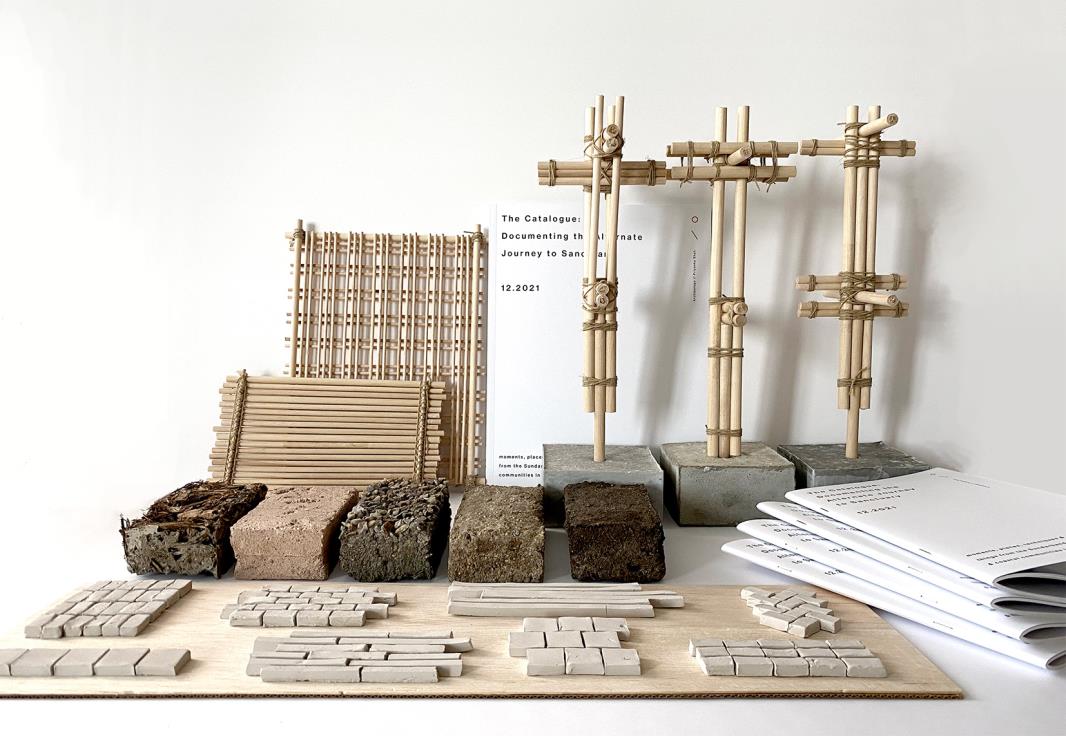
Readings
Public / Commons
- Arendt,
Hannah. “The Public and the Private Realm, excerpt
from The Human Condition.” In The
Idea of the Public Sphere. Gripsrud, Jostein, eds. (Lanham, New York, London: Lexington Books – Rowman & Littlefield, 2010): 93-108.
-
Babasikas, Petros, “Agora, Garden, Monument: Democracy and Architecture” in Greece
IS, Democracy Issue (Athens: Kathimerini
– The Athens Democracy Forum), September 2016, 84 – 91.
-
Debord, Guy. Society
of the Spectacle. Ken Knabb, trans. (London: Rebel Press, 2006): 5-17; 86-92.
-
Easterling, Keller. “The
Spatial Softwares of Extrastatecraft.”
In Places Journal, November
2014, 4-16. https://doi.org/10.22269/120610
-
Federici,
Silvia. “Commons Against and Beyond Capitalism,” in: Re-Enchanting the World:
Feminism and the Politics of the Commons, edited by Silvia Federici and Peter
Linebaugh (Oakland: PM Press, 2019), 85-98.
-
Fraser, Nancy.
“Rethinking the Public Sphere: A
Contribution to the Critique of Actually Existing Democracy.” In Social
Text, 1990, No. 25/26 (1990), 56-80.
-
Gruber Stefan, Ngo, Anh-Linh, Gatti Mirko, Hillier
Christian, eds. An Atlas of
Commoning: Places of Collective
Production. Arch+ Joural for Architecture and Urbanism, 2018, excerpts.
-
Koolhaas, Rem, “The Generic City,” in SMLXL, (New York: The Monacelli Press,
1998), 1248-1264.
-
Koolhaas, Rem, “Junkspace,” October, Vol. 100, Obsolescence, (Spring, 2002), 175-190.
-
Martin, Reinhold.
“Public and Common(s).” In Places
Journal, January 2013. https://doi.org/10.22269/130124
-
Mattern, Shannon.
“Maintenance and Care.” In Places Journal, January
2013.
-
Simmel,
Georg. “The Metropolis and Mental Life.” In The Blackwell City Reader. Edited
by Bridge, Gary and Watson, Sophie, 11-19.
Oxford & Malden: Wiley-Blackwell, 2002.

Climate Crisis
- Chakrabarty,
Dipesh. “The Climate of History: Four Theses.” Critical Inquiry 35,
no. 2 (2009): 197–222.
-
Amitav
Gosh. The Great Derangement: Climate
Change and the Unthinkable. (Chicago:
University of Chicago Press, 2017: excerpts.
-
Fitz, Angelica, Krasny, Elke, Architekturzentrum
Wien. Cricial Care: Architecture and
Urbanism for a Broken Planet. (Cambridge: MIT Press, 2019):
excerpts.
-
Harraway, Donna. “Tentacular
Thinking: Anthropocene, Capitalocene,
Chtulucene.” In e-flux #75 – September 2016. https://www.e-flux.com/journal/75/67125/tentacular-thinking-anthropocene-capitalocene-chthulucene/
-
Morton, Timothy.
“Introduction: Critical
Thinking,” in The Ecological Thought (Cambridge: Harvard University Press 2012): 1-19.
-
Roy,
Arundathi. “The Pandemic is a Portal,”
Financial Times (3 April 2020). Accessed 6 June 2023, https://www.ft.com/content/10d8f5e8-74eb-11ea-95fe-fcd274e920ca
-
Tsing,
Anna. The Mushroom at the End of the
World: On the Possibility of Life in Capitalist Ruins (Princeton, NJ: Princeton
University Press, 2015), 1-25, 155-163.
-
David
Wallace-Wells, “The Uninhabitable Earth: Life After Warming,” New York Magazine
(10 July 2017). https://nymag.com/intelligencer/2017/07/climate-change-earth-too-hot-for-humans.html
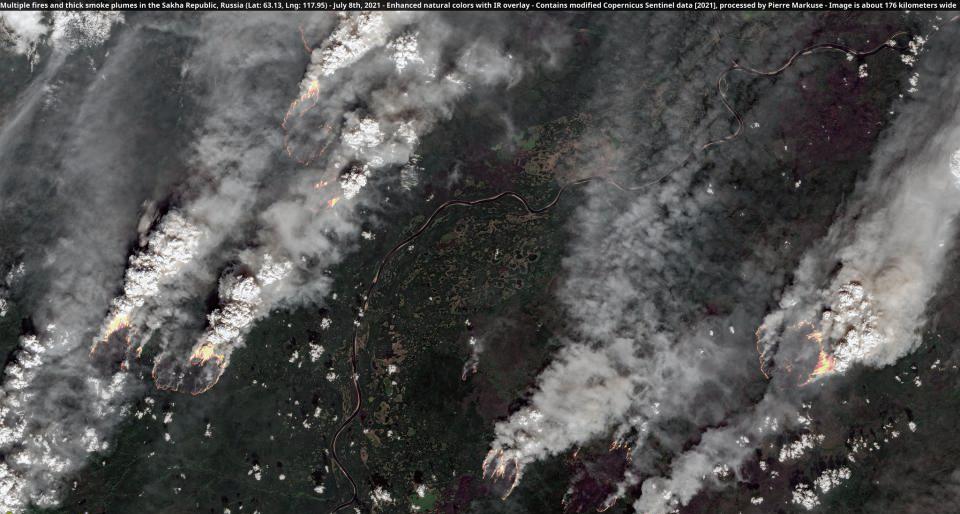
Decolonization / Social + Racial Justice
- Bob,
Joseph. 21 Things You May Not Know
About the Indian Act. Port
Coquitlam, BC: Indigenous Relations Press, 2018. 1-123.
-
Coates,
Ta-Nehisi. “The Case for Reparations,” The Atlantic (June 2014 issue). Accessed
12 June 2022. https://www.theatlantic.com/magazine/archive/2014/06/the-case-for-reparations/361631/
-
Cook,
Sekou. Hip Hop Architecture, (London: Bloomsbury Publishing, 2021) 003-007;
013-079
-
Davis, Mike. Planet of Slums. London & New York:
Verso, 2007, excerpts.
-
Glissant,
Édouard. “The Black Beach,” in The Poetics of Relation. Trans. Wing,
Betsy. Ann Arbor: The University of Michigan Press, 1997: 121-127.
-
Groys, Boris. “On Art Activism,” in e-flux Journal,
Issue #56 June 2014. https://www.e-flux.com/journal/56/60343/on-art-activism/
-
Mbembe,
Achille. “The Universal Right to Breathe,” Africa is a Country (17 June 2020).
Accessed 12 June 2022, https://africasacountry.com/2020/06/the-universal-right-to-breathe
-
Moskowitz,
Peter. How to Kill a City:
gentrification, inequality, and the fight for the neighbourhood. New York, NY:
Nation Books, 2017, excerpts.
-
O’Neill,
Meaghan. “Why Justice in Design is
Critical to Repairing America.” In Architectural
Digest, 2 July 2020. https://www.architecturaldigest.com/story/justice-in-design-america
-
Stewart, Luugigyoo Patrick. “Architecture as Indigenous Voice – soul and
spirit,” in Our Voices: Indigeneity and Architecture. Kiddle R, Stewart L.P, O’Brien K, eds
(Oro Editions, 2015): 30-45.
-
The Funambulist. “Two Opposite Ideologic
Territories: The Imperialist Mediterranean vs. the Archipelagic Creolized
Caribbean.” In The Funambulist Magazine. https://thefunambulist.net/history/history-two-opposite-ideologic-territories-the-imperialist-mediterranean-sea-vs-the-archipelic-creolized-caribbean
-
Wall
Kimmerer, Robin. Braiding Sweetgrass:
Indigenous Wisdom, Scientific Knowledge and the Teachings of Plants(Minneapolis: Milkweed Editions, 2013), ix-x, 205-215, 254-267.
-
Whyte, Kyle Powys. “Is it Colonial Déjà Vu? Indigenous
Peoples and Climate Injustice,” in Humanities for the Environment: Integrating Knowledges, Forging New
Constellations of Practice. Adamson, J, Davis, M, Huang H, eds
(London: Earthscan Publications, 2018):
88-104.
- Wilkins, Craig K. The Aesthetics of Equity(Minneapolis: University of Minnesota Press, 2007) 3-29
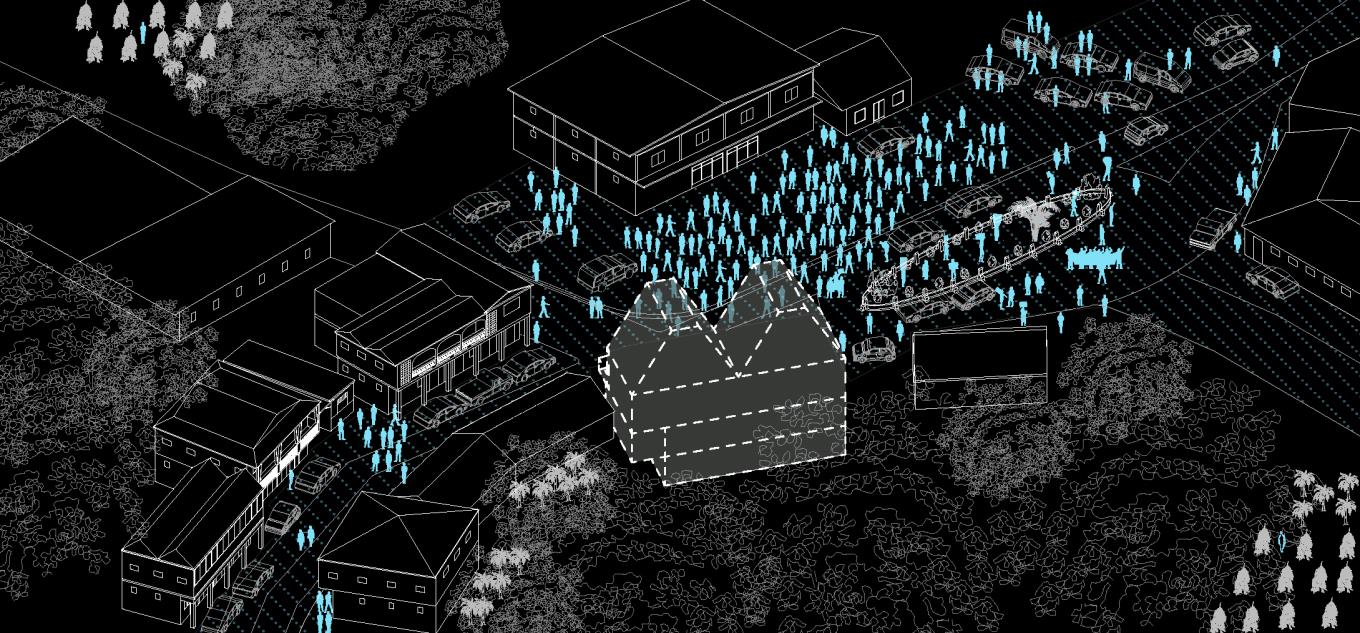
Archipelago
- Aureli,
Pier Vittorio & Giudici, Maria Shéhérazade.
“Islands: The Settlement from Property to Care.” In Log,
No. 47, Fall 2019: 175-199.
-
Callejas, Lluis, LCLA
Office. Pamphlet Architecture 33 “Islands & Atolls.” New York:
Princeton Architectural Press, 2013.
-
Coolidge,
Matthew. “A Tour of the Monuments of the
Great American Void.” In In Perspecta, Vol 41, Grand Tour
(2008): 94-101.
-
Deleuze, Gilles.
“Desert Islands.” In Desert Islands and Other Texts: 1953-1974.
Trans. Taormina, Mike. New
York: Semiotext(e), 2004: 9 – 14.
-
Easterling, Keller, “Contemplation: Seas” in Enduring Innocence:
Global Architecture and Its Political Masquerades (Cambridge: MIT Press,
2007), 59-68.
-
Pugh, Jonathan.
“Relationality and Island Studies in the Anthropocene.” Island Studies Journal 13(2), 2018: 93-110.
-
Staniscia, Stefania.
“Sceptered Isles: the possibility of the
archipelago.” In Architectural Review , April
2019.
-
Ungers, Oswald M, ed. Hertweck, Florian. “The City in the City – Berlin: an Urban Archipelago.” Berlin:
Lars Muellers Publishers, 2013.
-
http://urbanislandstudies.org/vol1.html
- https://www.whatisanisland.com/
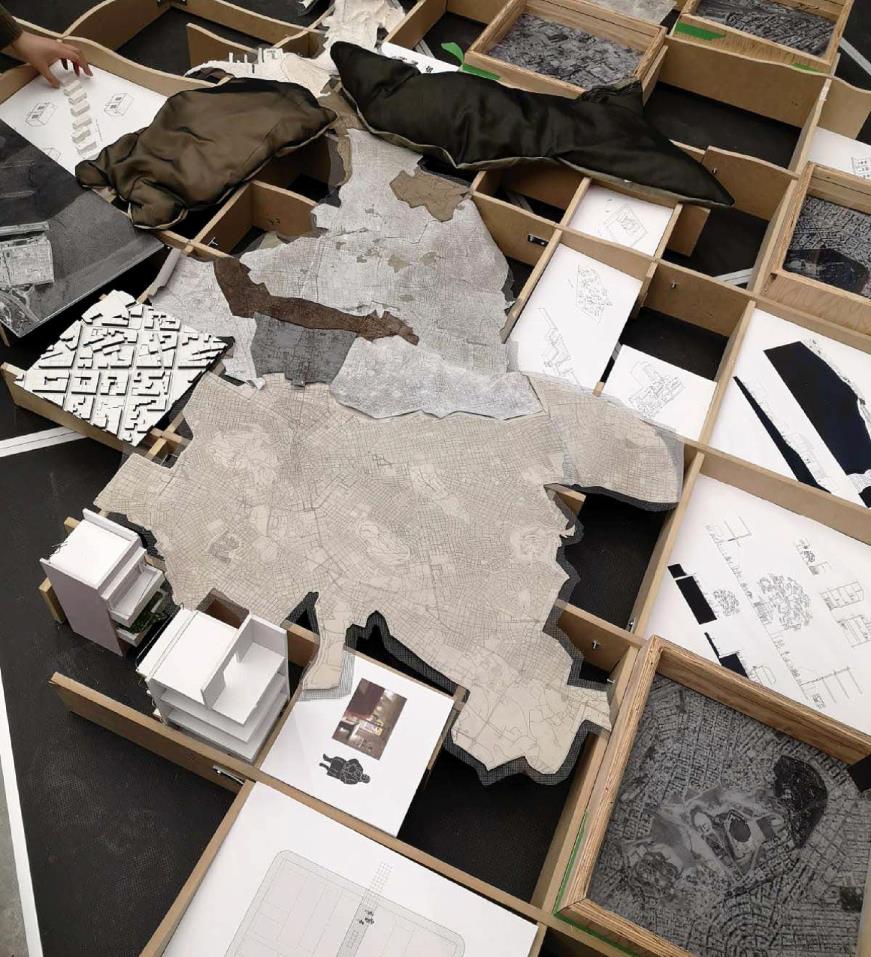
Storytelling
- Ballard,
J.G. “The Largest Theme Park in the
World.” In eds. Aesopos, Yiannis, Simeoforidis,
Yorgos, The Contemporary (Greek)
City. Athens: Metapolis, 2001: 107-112.
-
Bruno,
Giuliana. “Collection and Recollection.”
In Public Intimacy: Architecture and the Visual Arts. Cambridge
MA and London: MIT Press, 2007: 3-28, 38-41.
-
Carreri, Francesco. Walkscapes: Walking as an Aesthetic Practice. Barcelona: Gustavo Gill, 2002. excerpts
-
Eisenstein,
Sergei. “Montage and Architecture.” In trans. Michael Glenny, Assemblage 10, December 1989: 111-131.
-
Foucault,
Michel. “Of Other Spaces: Utopias and Heterotopias.” In trans. Jay Miscowiec, Architecture / Movement / Continuite, October 1984.
-
Haruki
Murakami, “Reality A and Reality B”, New York Times (29 November 2010). https://www.nytimes.com/2010/12/02/opinion/global/02iht-GA06-Murakami.html?searchResultPosition=3
-
Pikionis,
Dimitri, A Sentimental Topography. (London:
The Architectural Association, 1989.
-
Virilio,
Paul. Bunker Archaeology, trans.
George Collins. New York: Princeton Architectural Press, 1994.
-
Wiley, Danielle.
“A Walk About the City: Stalker,
the Transurbance and the City Map.”
Essay, 2015.
-
Yates,
Frances. The Art of Memory. Chicago,
IL: University of Chicago Press,
1964. Excerpts

Drawing / Images
- Banham, Reyner.
“A Black Box: The Secret Profession of Architecture.” In A Critic Writes, Selected Essays by Reyner
Banham, edited by Mary Banham, Sutherland Lyall, Cedric Price, Paul Barker,
292-299. Berkeley and Los Angeles: University of California Press, 1996.
-
Foster,
Hal. “Atlantis Found in the
Pacific.” In 306090 03: A Journal of Emergent
Architecture and Design, September 2002:
66-67.
-
Jameson, Frederic, Postmodernism, or, The Cultural Logic of Late Capitalism (Durham:
Duke Universit Press, 1991), 49-54.
-
Lynch, Kevin. “The Image of the Environment,” and “The City
Image and its Elements,” in The Image of
the City (Cambridge & London: MIT Press 1998), 1-13, 46-90.
-
Paglen, Travor. “Operational Images.” In e-flux Journal #59, November 2014. https://www.e-flux.com/journal/59/61130/operational-images/
-
Steyerl,
Hito. “In Defense of the Poor Image,” e-Flux Journal (Issue #10, November
2009). https://www.e-flux.com/journal/10/61362/in-defense-of-the-poor-image/
-
Tanizaki,
Yunichiro. In Praise of Shadows. Trans. Thomas Harper, Edward Seidensticker. New
Haven, CT: Letee’s Island Books, 1977.
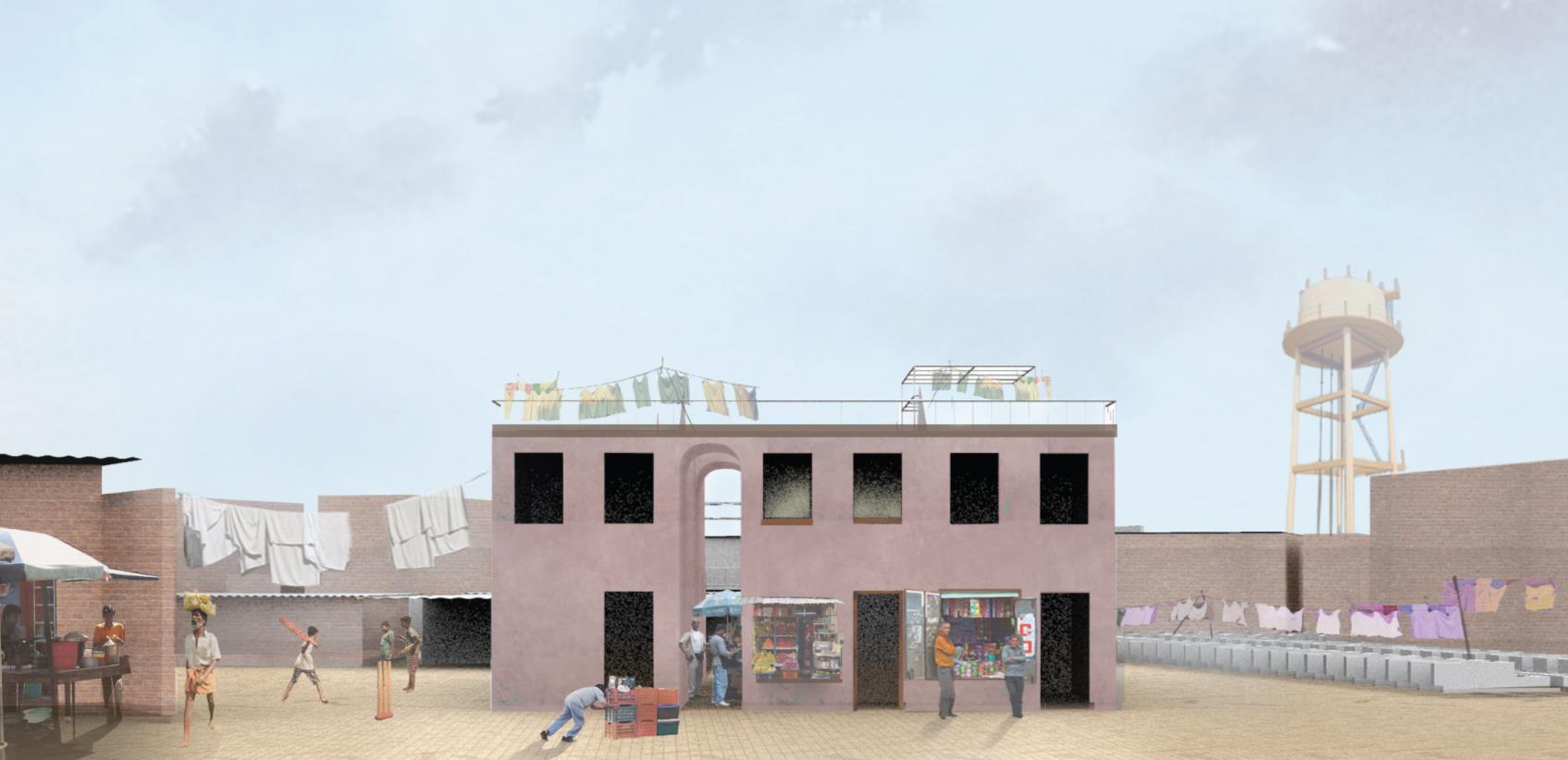
Landscape / Reuse
- Berger, Alan, “Drosscape,” in Charles Waldheim, ed,The Landscape Urbanism Reader (New York: Princeton Architectural Press, 2006), 197-218.
- Buckley, Craig. “Never Demolish: Bois-le-Prêtre Regrows in Paris.” Source: Log, No. 24 (Winter / Spring 2012), 43-50.
- Corner, James. “Eidetic Operations and New Landscapes.” In ed. James Corner, Recovering Landscape: Essays in Contemporary Landscape Architecture. New York: Princeton Architectural Press, 1999: 153 - 169.
- Corner, James. “The Agency of Mapping: Speculation, Critique and Invention,” in Mappings, Cosgrove, D. Ed. Reaktion Books. London, UK.1999. 213-252.
- Cosgrove, Denis. “Carto City.” In eds. Abrams, Janet, Hall, Peter, Else/Where: Mapping – New Cartographies of Networks and Territories. Minneapolis: University of Minnesota Design Institute, 148-157.
- Exo Adams, Ross. “Notes from the Resilient City.” In Log No. 32 (Fall 2014): 126 – 139.
- Milligan, Brett. “Landscape Migration.” In Places Journal, June 2015. https://doi.org/10.22269/150629
- Mossop, Elizabeth, “Landscapes of Infrastructure” in Charles Waldheim, ed, The Landscape Urbanism Reader (New York: Princeton Architectural Press, 2006), 163-78.
-
Thompson, Nato
& Independent Curators International. Experimental
Geography: Radical Approaches to
Landscape, Cartography, and Urbanism. New York: Meville House Publishing,
2008.
- Jacoby, Sam, Drawing Architecture and the Urban (Chichester: John Wiley & Sons, 2016).
- Riley, Terence. The Changing of the Avant-Garde: Visionary Architectural Drawings from the Howard Gilman Collection. New York, NY: MoMA, 2002.
-
Atlas of Tyrrany
- Bohl, Charles, Plater-Zyberk, Elizabeth. “Building Community Across the Rural-to-Urban Transect,” In Places Journal, January 2018.
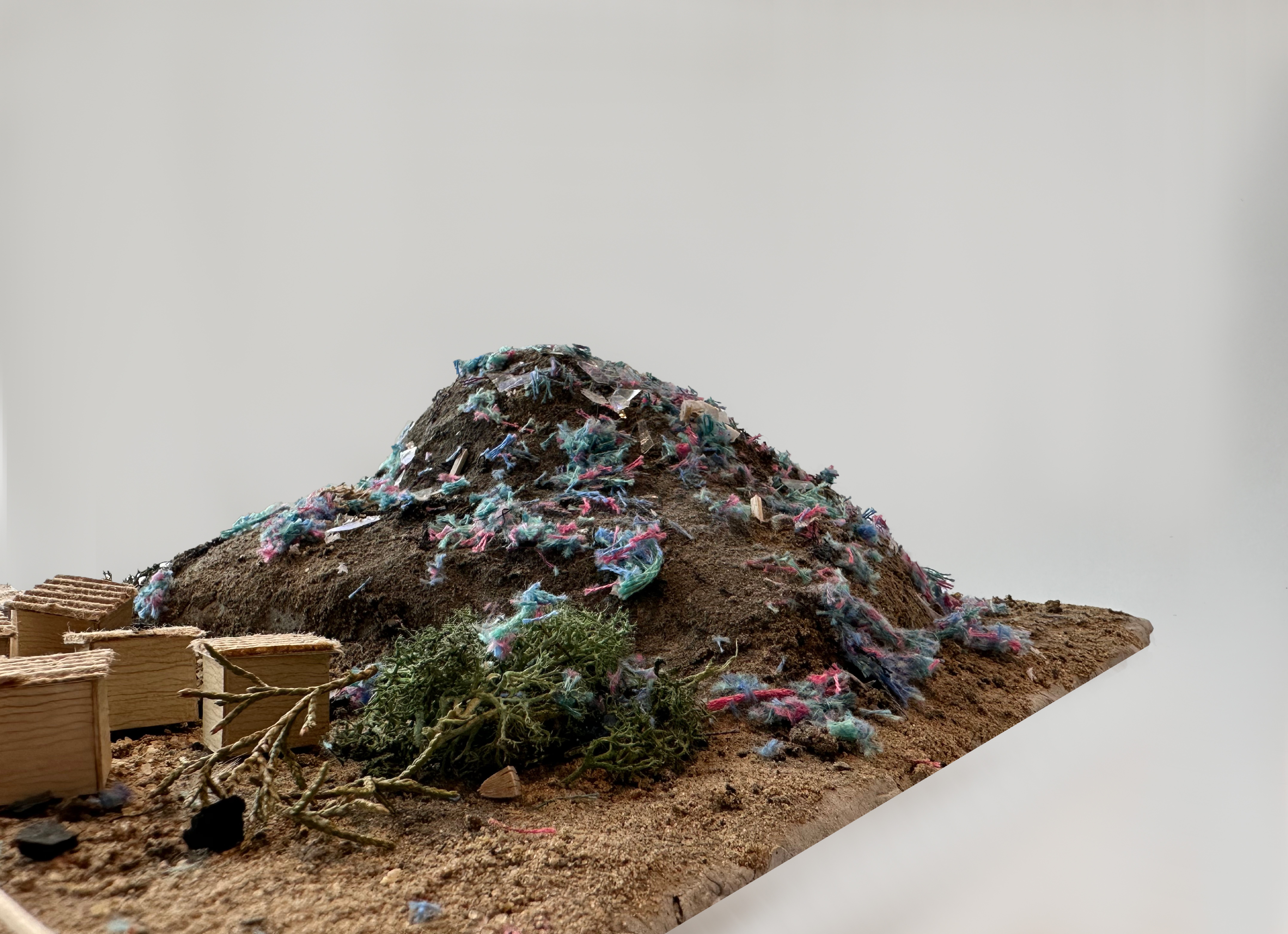
Films
- Akomfrah, John. Vertigo Sea. London: Smoking Dogs Films, 2015.
- Akomfrah, John, Black Audio Film Collective. Handsworth Songs. London: Black Audio Film Collective, 1986. VHS: https://librarysearch.library.utoronto.ca/permalink/01UTORONTO_INST/14bjeso/alma991106496557806196
-
Bong, Joon-ho. Parasite. London, UK:
Curzon Artificial Eye, 2020. https://media3-criterionpic-com.myaccess.library.utoronto.ca/htbin/wwform/006?T=MK20101
-
Castaing-Taylor, Lucien and
Paravel, Véréna. Leviathan. Boston: Sensory Ethnography Lab, 2012. (available on
Kanopy.com). https://www.kanopy.com/en/utoronto/video/6554378
-
Chuang, Liu. Bitcoin Mining
and Field Recordings of Ethnic Minorities.
Shanghai: Antenna Space, 2018.
-
Farocki, Harun. Images of the World and the Inscription
of War. DVD. West Berlin:
Harun Farocki Filmproduktion, 1988
-
Fleifel, Mahdi. A World
not Ours. Beirut: Nakba Filmworks & Screen Institute
Beirut, 2012. https://weta.org/watch/shows/pov/world-not-ours
-
Freidrichs, Chad. The
Pruitt-Igoe Myth. New York, NY: First Run Features, 2012. (available on Kanopy.com). https://utoronto.kanopy.com/video/pruitt-igoe-myth-0
-
Gondry, Michel. Eternal
Sunshine of the Spotless Mind. DVD.
New York, NY: Focus Features,
2004.
-
Kar
Wai, Wan. In the Mood for Love. DVD. New York, NY:
The Criterion Collection, 2000. https://utoronto.kanopy.com/video/mood-love
-
Lang, Fritz. Metropolis. DVD.
New York, NY: Kino Lorber Films,
1929 (available on Kanopy.com). https://torontopl.kanopy.com/video/metropolis-0
-
Manna, Jumana. Wild
Relatives. Jumana Manna: Germany, Lebanon, Norway, 2018.
-
Marker,
Chris. La Jetée. New York, NY: Criterion Collection, 1962; 2013. https://www.youtube.com/watch?v=nvJzKqdSr-Q
-
Marker, Chris. Sans
Soleil. DVD New York, NY: Criterion Collection, 1983; 2013.
-
Meirelles, Fernando. City of God. DVD. Toronto, ON: eOne Films, 2002. https://media3-criterionpic-com.myaccess.library.utoronto.ca/htbin/wwform/
006?T=AL056315
-
Simon, David. The Wire. TV Series. Los
Angeles: Blown Deadline Productions /
HBO, 2002-2008.
-
Tati,
Jacques. PlayTime. DVD. New York, NY:
The Criterion Collection, 1967. (available
on Kanopy.com). https://torontopl.kanopy.com/video/playtime
Exhibitions
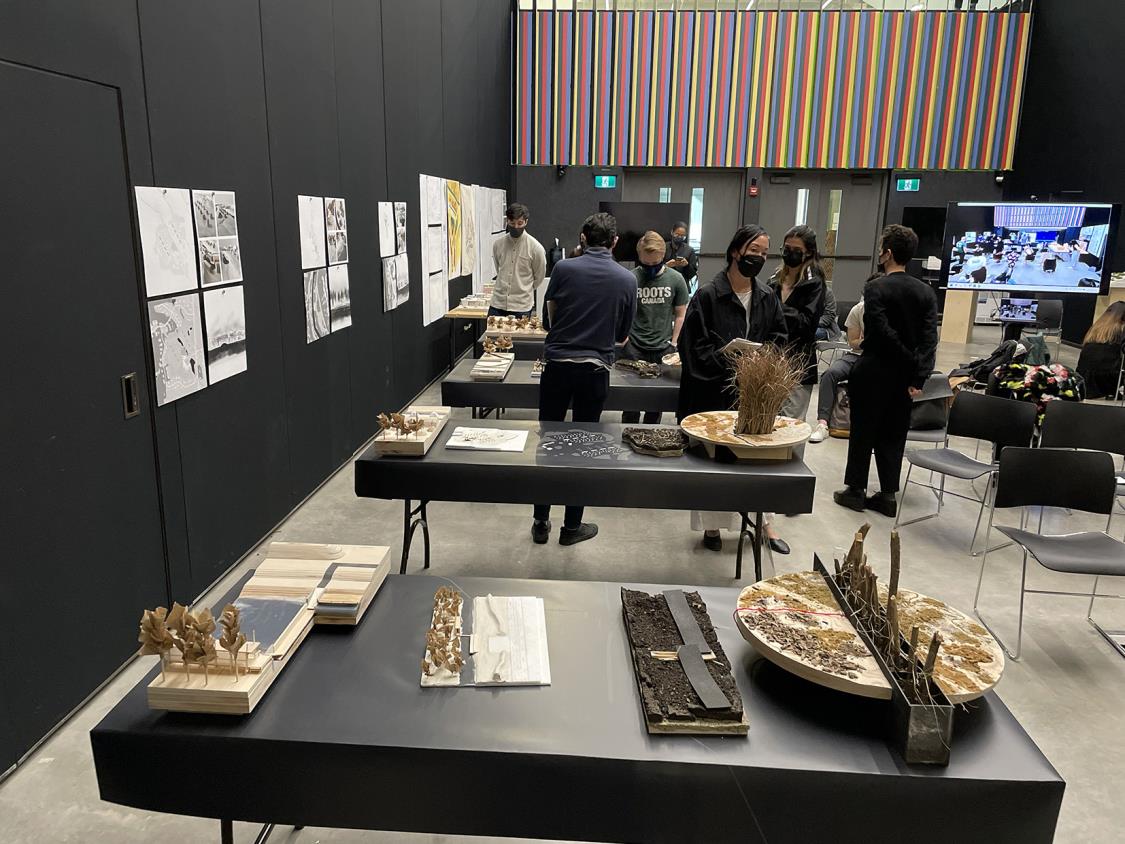

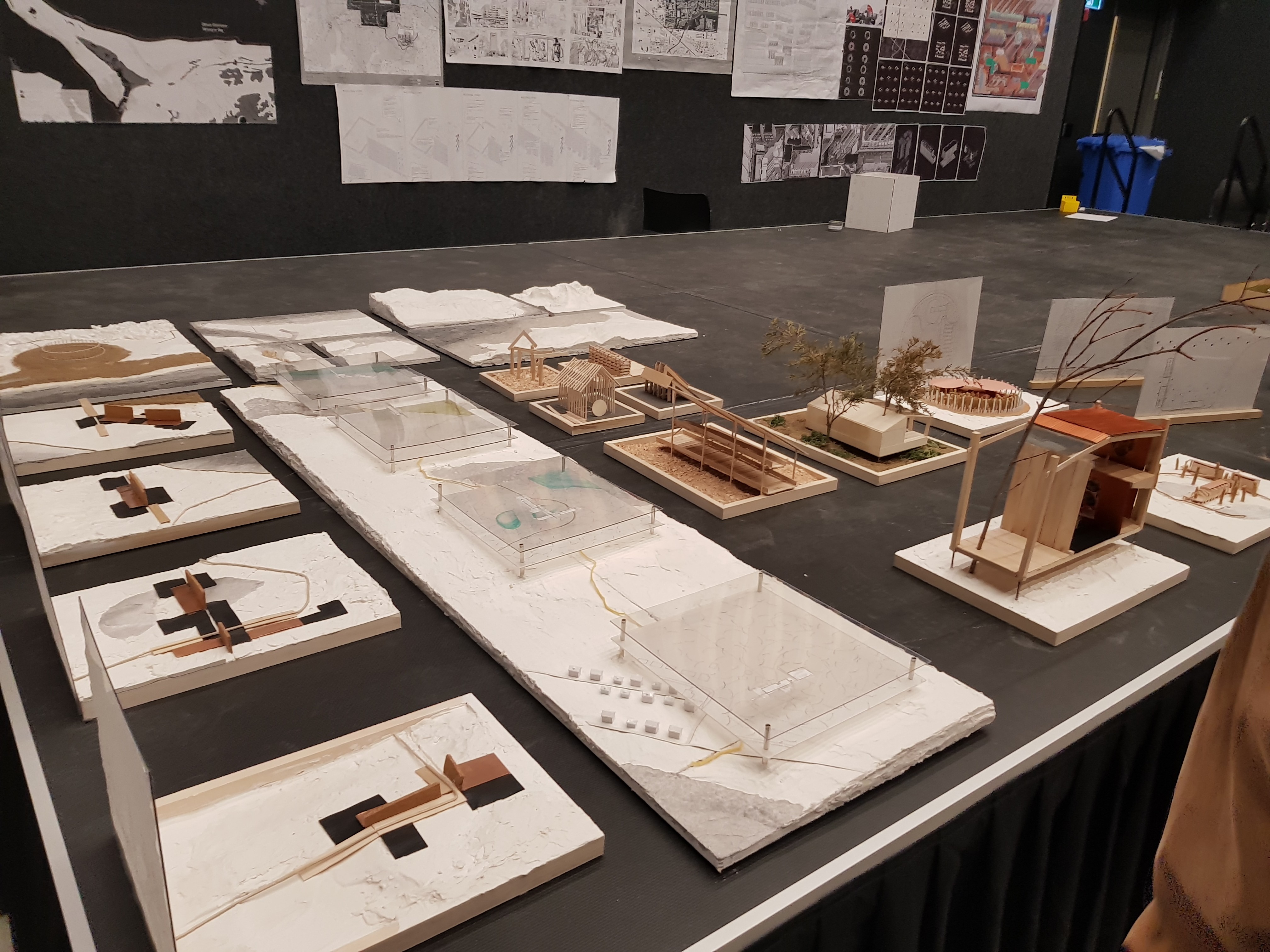
© Archipelago Studio 2020 @ the John H. Daniels Faculty of Architecture, Landscape, and Design, University of Toronto.